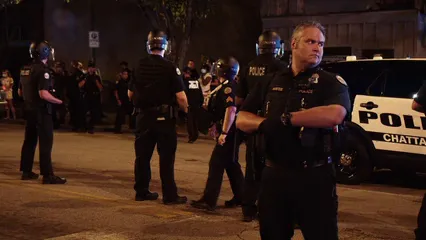Introduction
Katy, Texas, is a charming suburb located just outside Houston. With a population of approximately 25,253, the city boasts a vibrant community and rich cultural diversity. Katy’s geographical significance stems from its proximity to major highways and the bustling metropolis of Houston. This makes it a popular choice for families and professionals alike.
Understanding crime statistics is essential for various reasons. For starters, it helps residents assess community safety. Knowledge of local crime trends can influence housing decisions and neighborhood choices. For potential movers, crime rates can sway their perception of a community’s livability.
Moreover, crime data plays a crucial role in shaping public policy. Local authorities can allocate resources effectively to enhance safety measures based on crime patterns. Statistics also foster transparency, allowing residents to engage with law enforcement agencies and advocate for community safety initiatives.
But don’t just sit there worrying about your safety; take proactive measures! One of the best ways to enhance your home security is by investing in a Home Security Camera System. This nifty gadget will help you keep an eye on your property while you binge-watch your favorite shows! Who says you can’t do both?
In this blog post, we will take a closer look at Katy’s crime statistics. We will explore key themes such as violent crime rates, property crime incidents, community perception, and comparisons with neighboring areas. With this information, you’ll be better equipped to understand the safety landscape of Katy, Texas.

Overview of Katy Crime Statistics
Crime Rate Overview
Katy’s overall crime rate stands at 46.61 per 1,000 residents, which is notably higher than the national average. According to recent reports, Katy’s crime stats indicate a significant prevalence of both violent and property crimes. The city recorded 1,177 total crimes in the latest year, with a breakdown revealing 118 violent crimes and 1,059 property crimes.
To put this into perspective, individuals in Katy face a 1 in 21 chance of becoming a victim of either violent or property crime. In comparison, the national average places that risk at roughly 1 in 36. While Katy may not be the highest in crime rates, it does rank higher than 97% of communities throughout Texas.
Here’s a snapshot of the crime statistics:
- Population: 25,253
- Total Crimes: 1,177
- Violent Crimes: 118 (0 murders, 13 rapes, 17 robberies, 88 assaults)
- Property Crimes: 1,059 (60 burglaries, 925 thefts, 74 motor vehicle thefts)
An infographic showcasing these statistics could provide a clearer visual representation for readers. It’s crucial to understand these numbers in context. They not only reflect the safety of the community but also inform law enforcement strategies and community engagement efforts.

Types of Crimes
Crimes in Katy can be broadly categorized into two main types: violent crimes and property crimes. Violent crimes include serious offenses such as murder, rape, robbery, and assault. Each of these crimes has its own implications for community safety and public perception.
In Katy, the violent crime rate is around 4.67 per 1,000 residents. This is slightly higher than the Texas average of 4.32. On the other hand, property crimes in Katy are alarmingly high, with a rate of 41.94 per 1,000 residents, significantly exceeding the Texas average of 23.0.
A closer look at the types of property crimes reveals interesting trends. The majority of property crimes fall under theft, with 925 reported incidents. Burglary and motor vehicle theft also contribute to the overall statistics, with 60 and 74 incidents, respectively.
Over the past few years, crime trends have shown fluctuations. While violent crimes have seen a decrease, property crimes have become more prevalent, highlighting the need for increased community vigilance and law enforcement presence. Understanding these crime dynamics can help residents make informed decisions about their safety and engagement with local authorities.

To ensure your safety and that of your loved ones, consider investing in a Personal Safety Alarm. This compact device is perfect for drawing attention in emergencies and is an excellent addition to your safety toolkit!
Overall, the crime rates in Katy illustrate a complex landscape that deserves careful consideration and ongoing dialogue among community members.
Key Crime Statistics
Violent Crime Statistics
Breakdown of Violent Crime
Katy, Texas, has experienced a series of reported violent crimes, with the latest statistics shedding light on the situation. Violent crimes include assault, robbery, rape, and murder. Here’s the breakdown:
- Assault: 88 incidents
- Robbery: 17 incidents
- Rape: 13 incidents
- Murder: 0 incidents
In total, Katy reported 118 violent crimes. To put this in perspective, the violent crime rate stands at 4.67 per 1,000 residents. This is slightly above the Texas average of 4.32 per 1,000 residents.
When we compare these figures to national averages, the contrast is evident. The national average violent crime rate is about 22.7 per 1,000 residents, making Katy’s rate appear relatively favorable. However, the state of Texas shows a varied landscape, with some areas experiencing much higher rates.
Recent trends indicate a decrease in violent crimes over the past few years, despite fluctuations. For example, data from the last five years shows a decline in reported assaults, while robberies have remained relatively consistent.

To visualize this data, here’s a chart comparing Katy’s violent crime rates to both state and national averages:
| Crime Type | Katy Rate (per 1,000) | Texas Average | National Average |
|---|---|---|---|
| Assault | 3.48 | 3.67 | 4.8 |
| Robbery | 0.67 | 1.36 | 2.7 |
| Rape | 0.52 | 0.5 | 0.4 |
| Murder | 0 | 0.06 | 0.6 |
Resident Sentiments
Community sentiment plays a vital role in understanding crime dynamics. A survey conducted among Katy residents yielded interesting insights regarding safety perceptions.
- 49% of respondents feel pretty safe, acknowledging some concerns yet generally feeling secure.
- 43% expressed feeling very safe, citing no significant worries.
- 6% felt somewhat safe, indicating noticeable safety concerns.
- Only 1% reported feeling not safe at all.
When it comes to law enforcement, community feedback is equally enlightening. According to the same survey, 57% stated that police are very visible and responsive. This suggests a strong community presence that likely contributes to the overall sense of security.

Property Crime Statistics
Breakdown of Property Crime
Property crime in Katy includes burglary, theft, and motor vehicle theft. The numbers reveal a more alarming situation, as property crimes make up the majority of reported incidents. The breakdown is as follows:
- Burglary: 60 incidents
- Theft: 925 incidents
- Motor Vehicle Theft: 74 incidents
This results in a total of 1,059 property crimes, leading to a property crime rate of 41.94 per 1,000 residents. This figure is significantly higher than the Texas average of 23.0 per 1,000 residents.
Comparatively, the national average property crime rate is around 35.4 per 1,000 residents, showing that Katy’s property crime rates are notably elevated.

To illustrate this data visually, here’s a comparison table:
| Crime Type | Katy Rate (per 1,000) | Texas Average | National Average |
|---|---|---|---|
| Burglary | 2.37 | 1.9 | 2.5 |
| Theft | 36.55 | 17.4 | 20.0 |
| Motor Vehicle Theft | 2.93 | 3.0 | 2.5 |
Impact on Residents
The impact of property crime on residents cannot be understated. Increased incidents of theft and burglary affect community perceptions of safety and trust. Residents often express concerns about leaving their homes unattended or walking alone after dark.
Personal anecdotes from residents highlight the ongoing struggle. One local shared, “I used to leave my door unlocked; now I think twice.” Such sentiments reflect a growing unease that can lead to a decrease in community engagement. To combat this, consider installing a Door Lock with Keypad. It adds an extra layer of security and peace of mind!
In conclusion, while Katy boasts a relatively low violent crime rate compared to national figures, property crime remains a significant concern for residents. Understanding these statistics is vital for fostering discussions about safety and community initiatives. As crime trends continue to evolve, so must the community’s response.

Impact on Residents
Property crime has a profound impact on how residents perceive their safety in Katy. When individuals hear about burglaries or thefts, it can create a sense of unease. One resident, Sarah, shared, “I used to stroll around my neighborhood without a care. Now, I find myself checking my car doors twice.” This sentiment resonates with many in the community, highlighting a shift in behavior due to rising property crime rates.
Community engagement also suffers as fear of crime takes root. People may hesitate to participate in local events or gatherings, reducing opportunities for neighbors to connect. John, another resident, remarked, “I used to attend neighborhood BBQs, but now I prefer to stay home. It just doesn’t feel safe.” Such anecdotes illustrate the ripple effect property crime has on community dynamics.
In an informal survey, 49% of participants stated they feel “pretty safe,” yet many acknowledged concerns that linger in the back of their minds. A significant 43% reported feeling “very safe,” but with a hint of reservation. This mixed sentiment indicates that while many enjoy living in Katy, the fear of property crime looms large.
Ultimately, property crime not only affects individuals but also erodes the sense of community. Residents long for a time when safety was an afterthought rather than a constant consideration.

Crime Rate Comparison
Comparison with Other Texas Cities
| City | Population | Violent Crime Rate (per 1,000) | Property Crime Rate (per 1,000) |
|---|---|---|---|
| Katy | 25,253 | 4.67 | 41.94 |
| Brookshire | 4,865 | 393.4 | 1,466.4 |
| Richmond | 12,086 | 372.3 | 1,853.4 |
| Cypress | 158,000 | 2.9 | 20.4 |
Katy’s crime rates present a telling picture when compared to nearby cities. While its violent crime rate stands at 4.67 per 1,000 residents, it’s significantly lower than Brookshire and Richmond, which have violent crime rates of 393.4 and 372.3, respectively. However, Katy’s property crime rate of 41.94 per 1,000 residents is alarmingly higher than Cypress’s rate of 20.4, making property crime a pressing issue for its residents.

Historical Trends
Over the past decade, Katy has experienced notable fluctuations in its crime rates. A decade ago, the violent crime rate was considerably higher, with incidents peaking in 2015. Since then, a downward trend has emerged, primarily due to increased law enforcement initiatives and community awareness programs.
Data indicate that while violent crimes have decreased, property crimes have risen sharply. This paradox may stem from economic shifts and population growth. As Katy’s population swells, so do the opportunities for property crimes. The latest reports suggest a 14.4% increase in property crimes over the past year, prompting residents to take extra precautions.
Community initiatives have also played a role in shaping these trends. Programs aimed at fostering neighborhood watch groups and promoting local engagement have contributed to a collective effort to combat crime. However, the rising number of property crimes indicates that more work is needed to restore a sense of security in the community.
In summary, Katy’s crime statistics paint a complex picture. While violent crime rates are on the decline, the increase in property crimes poses challenges for residents and law enforcement alike. Understanding these shifts is crucial for fostering dialogue and action to ensure the safety of Katy’s vibrant community.

Popular Neighborhoods and Crime Rates
Neighborhood Overview
Katy, Texas, is home to various neighborhoods, each with its unique charm and character. However, crime rates can differ significantly from one area to another. Here’s a look at some popular neighborhoods and their respective crime rates:
- Cinco Ranch: Known for its strong community vibe, Cinco Ranch sees a lower crime rate, making it a favorite for families. The property crime rate here is around 30 per 1,000 residents, which is reassuring.
- Seven Meadows: This neighborhood has a reputation for safety, with a crime rate similar to Cinco Ranch. Residents enjoy a peaceful environment, with property crimes reported at approximately 28 per 1,000 residents.
- Highland Trails: Unfortunately, Highland Trails has a higher crime rate compared to others, with property crimes nearing 45 per 1,000 residents. Residents here often participate in neighborhood watch programs to enhance security.
- Willow Park Greens: This area boasts a reputation for safety and community engagement. Its crime rate is relatively low, at about 25 per 1,000 residents, giving residents peace of mind.
- Pin Oak Village: Pin Oak Village has a mixed reputation. While some areas are safer, others experience higher property crime rates, estimated at around 40 per 1,000 residents. Community groups are working to improve safety.
When considering moving to Katy, it’s essential to research crime statistics for the neighborhood you’re interested in. While Cinco Ranch and Seven Meadows offer a more secure environment, areas like Highland Trails require extra vigilance. And speaking of vigilance, a Motion Sensor Light can be a great addition to your home to deter unwanted visitors!

Real Estate Implications
Crime rates can have a significant impact on real estate values and desirability. Neighborhoods with lower crime rates tend to attract more buyers, leading to increased property values. Conversely, areas with higher crime rates may see stagnant or declining property values.
Potential homebuyers should consider the following tips when researching crime statistics:
- Utilize Online Resources: Websites like NeighborhoodScout and AreaVibes provide detailed crime statistics for specific neighborhoods, offering insights into trends and safety levels.
- Visit the Neighborhood: A personal visit can help gauge the community atmosphere. Pay attention to local amenities, parks, and the general upkeep of properties.
- Engage with Residents: Chatting with current residents about their experiences can provide valuable insights into the area’s safety and community vibe.
- Check Local News: Stay updated on local news stories related to crime. This can help identify any emerging trends or issues.
Understanding the relationship between crime rates and real estate can empower homebuyers to make informed decisions. By prioritizing safety, they not only protect their investment but also enhance their quality of life. And for those who want a bit more safety in their lives, consider a Home Safe to secure your valuable belongings!

Methodology of Crime Data Collection
Data Sources
In this article, crime data is gathered from reliable sources, including the FBI and local law enforcement agencies. The FBI’s Uniform Crime Reporting (UCR) Program compiles data from over 18,000 law enforcement agencies across the United States. This data reflects the most recent year available, ensuring accuracy and relevance.
Local agencies contribute by providing crime statistics that highlight trends specific to Katy. These combined efforts create a comprehensive picture of crime in the area.

Importance of Accurate Data
Using accurate crime data is crucial for public awareness and effective policy-making. Reliable statistics inform residents about their safety and help law enforcement allocate resources efficiently. However, discrepancies can arise from various factors, such as differences in reporting practices between counties or agencies.
In Katy, some neighborhoods may report lower crime rates due to fewer law enforcement officers present. Therefore, it’s essential for residents to utilize multiple sources of information to get a well-rounded view of local crime.
Understanding the methodology behind crime data collection allows residents to appreciate the intricacies of crime statistics. With accurate, reliable data, citizens can engage in informed discussions about community safety and advocate for improvements where necessary.

Importance of Accurate Data
Accurate crime data is essential for public awareness and effective policy-making. It enables residents to stay informed about safety concerns within their communities. When communities have access to reliable statistics, they can better understand crime trends and their implications. This knowledge empowers residents to advocate for necessary changes, whether that involves increasing police presence or implementing community programs.
However, discrepancies in crime reporting can challenge this process. Different jurisdictions may use varying definitions for similar offenses. Such inconsistencies can skew perceptions of safety. For instance, some areas may report fewer incidents simply because of underreporting or differences in law enforcement practices. Therefore, it is crucial for residents to cross-reference data from multiple sources, ensuring a comprehensive understanding of local crime trends.
Moreover, accurate data collection and reporting assist policymakers. With clear insights into crime patterns, authorities can allocate resources more effectively. This can include improving neighborhood watch programs or funding community outreach initiatives. Inaccurate data leads to misinformed decisions, which could compromise community safety.

Conclusion
In summary, Katy’s crime statistics paint a multifaceted picture of safety and concern. The overall crime rate of 46.61 per 1,000 residents indicates a community that experiences higher crime levels than the national average. With 118 violent crimes reported, the violent crime rate stands at 4.67 per 1,000 residents, which is slightly above Texas’s average. On the other hand, property crime remains a pressing issue, with a staggering 1,059 incidents translating to a property crime rate of 41.94 per 1,000 residents.
For current residents, understanding these statistics is vital. The implications of crime rates can influence one’s perception of safety and community engagement. A lower feeling of safety can deter residents from participating in local events or activities, thereby reducing the community spirit. For potential movers, these statistics serve as a critical factor in choosing where to live. They highlight the importance of researching crime rates before making any decisions.
Policymakers also benefit from these statistics. They can use the data to develop targeted strategies to address crime and enhance public safety. For instance, if property crime rates are rising, resources can be allocated to increase law enforcement presence in neighborhoods experiencing issues.
Ultimately, staying informed about local crime statistics fosters better community engagement. Residents are encouraged to participate in neighborhood watch programs or community meetings to advocate for safety initiatives. Knowledge is power, and understanding crime trends can empower citizens to take action that enhances their community’s well-being. And don’t forget, a Fire Extinguisher is also a must-have for every home to ensure your safety!
FAQs
What are the most common types of crimes in Katy, TX?
Katy experiences a mix of violent and property crimes. Violent crimes include assault, robbery, and rape, with property crimes primarily consisting of theft and burglary. The most common property offense is theft, accounting for 925 incidents.
How does Katy’s crime rate compare to other cities in Texas?
Katy’s crime rate is higher than many Texas cities, particularly in property crime. For example, while Katy’s property crime rate is 41.94 per 1,000 residents, cities like Cypress report significantly lower rates at 20.4.
What neighborhoods in Katy are considered the safest?
Neighborhoods like Cinco Ranch and Seven Meadows are known for their lower crime rates. Community initiatives, such as neighborhood watch programs, contribute to their safety, making these areas popular among families.
How can I access real-time crime data for Katy?
Residents can access real-time crime data through resources like NeighborhoodScout and local law enforcement websites. These platforms provide updated statistics and neighborhood crime maps.
What should I do if I become a victim of a crime in Katy?
If you become a victim, immediately report the crime to local law enforcement. They can provide assistance and guide you through the process. Additionally, local victim support services can offer resources and help during recovery.
For a deeper understanding of the safety landscape in Katy, you can explore the Katy crime statistics.
Please let us know what you think about our content by leaving a comment down below!
Thank you for reading till here 🙂
All images from Pexels




